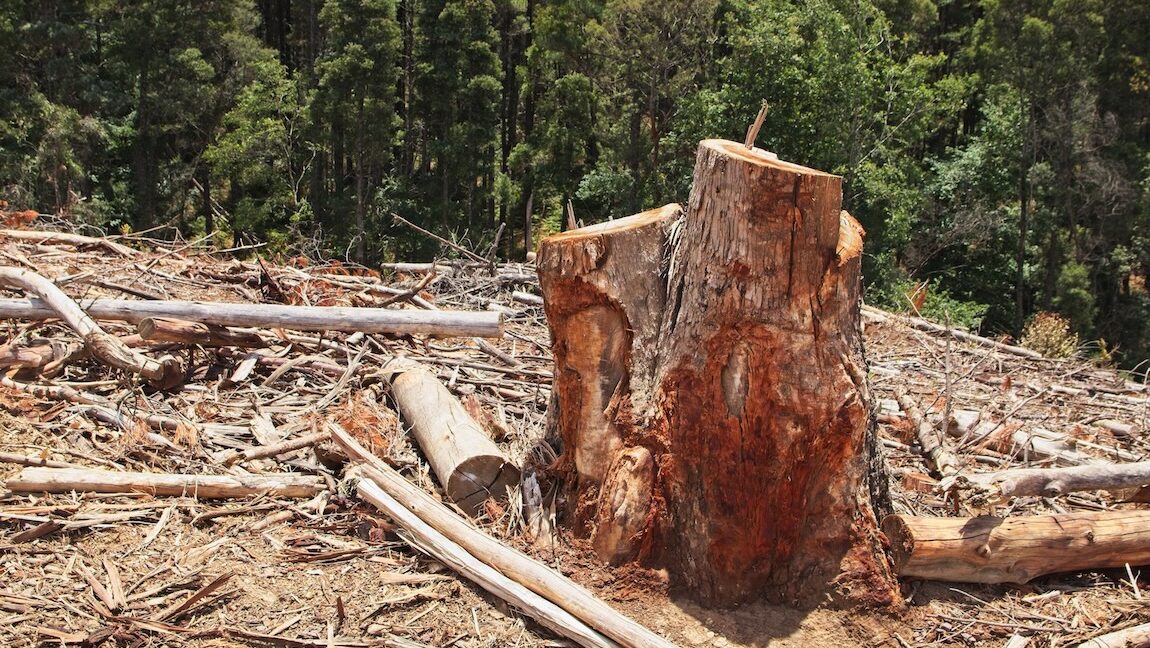Based on a press release by the Joint Research Centre.
A new perspective paper published in Nature, led by the European Commission’s Joint Research Centre and supported by researchers from the German Centre for Integrative Biodiversity Research (iDiv) and Leipzig University, offers crucial insight into the drivers of Europe’s declining forest carbon sink.
Forests cover roughly 40% of EU territory and have played a vital role in climate mitigation — removing around 10% of the continent’s human-caused carbon dioxide emissions between 1990 and 2022. This natural process, known as the forest carbon sink, is now showing signs of weakening, with European forests absorbing less CO₂ than they once did. The researchers state the decline threatens the EU’s climate targets and call for urgent action to halt or reverse the trend.
“The European Union relies on ecosystems to offset an important share of fossil emissions, but recent trends show that their carbon sequestration capacity is moving away from policy targets, due to combined effects of climate change and management pressures,” explains co-author Dr Ana Bastos of iDiv and Leipzig University.
The paper lays out research priorities to improve forest monitoring, modelling, and management in order to restore the carbon sink, enhance forest resilience, and better inform policy making.
A shrinking sink
The average forest carbon sink fell by 27% between 2020–2022 compared to 2010–2014, according to the European Environment Agency. Preliminary 2025 data show an even sharper decline. If this trend continues, the EU risks missing its target of 42 MtCO₂eq additional net removals by 2030, as set under current regulations.
Contributing factors include increased tree harvesting, rising heatwaves and droughts, and more frequent wildfires, storms, and insect outbreaks — all intensified by climate change. This puts stress on the EU forest carbon sink.
Closing knowledge gaps
The study identified several knowledge gaps in how Europe’s forests are monitored and modelled, with two priorities standing out. There is a pressing need to:
- … measure carbon fluxes more precisely and in a more timely manner, by tracking how carbon moves between soil, vegetation, and the atmosphere;
- … refine predictions of how extreme weather events, and worst-case scenarios, will alter these fluxes.
Tackling these issues is essential for building a comprehensive EU-wide forest and carbon sink monitoring system, according to the authors. More research is also needed in earth observation, forest resilience, forecasting, and scaling up. Reliable data and timely monitoring of carbon pools and forest health are essential to support informed action.
“High-resolution monitoring tools that combine drones and satellite data through AI are essential to tackle today’s environmental challenges. Developing such tools is one of our research priorities, as demonstrated by our collective efforts in the deadtrees.earth initiative.” says Miguel Mahecha, co-author of the study.
The authors also state the need to develop models that allow the simulation of interactions between management practices and forest resilience to extreme events, and to evaluate trade-offs and co-benefits of specific policies in terms of carbon, water cycling, biodiversity preservation, and others.
In addition to outlining actionable measures to advance the 2024 Nature Restoration Regulation, The Land Use Change and Forestry Regulation, the Carbon Removals and Carbon Farming Regulation, and the EU’s Climate Neutrality goal, the authors call for integrated policies and a roadmap to guide policy decisions.
By pairing timely regulations with incentives for sustainable practices, the EU can still reverse the decline of its forests and preserve their expected contribution to climate neutrality by 2050, according to the authors.
Original publication
(Researchers with iDiv affiliation bolded)
Migliavacca M., Grassi G., Bastos A., Ceccherini G., Ciais P., Janssens-Maenhout G., Lugato E., Mahecha M.D., Novick K.A., Peñuelas J., Pilli R., Reichstein M., Avitabile V., Beck P.S.A., Barredo J.I., Forzieri G., Herold M., Korosuo A., Mansuy N., Mubareka S., Orth R., Rougieux P., Cescatti A. (2025). Declining forest carbon sink threatens EU climate targets, Nature. DOI: 10.1038/s41586-025-08967-3
Contact
Dr Ana Bastos
German Centre for Integrative Biodiversity Research (iDiv) Halle-Jena-Leipzig
Leipzig University
Telephone: +49 341 97 32804
Email: ana.bastos@uni-leipzig.de
Website: https://www.physes.uni-leipzig.de/en/profile/mitarbeiter/dr-ana-bastos
Dr Miguel Mahecha
German Centre for Integrative Biodiversity Research (iDiv) Halle-Jena-Leipzig
Leipzig University
Email: miguel.mahecha@uni-leipzig.de
Christine Coester
Media and Communications
German Centre for Integrative Biodiversity Research (iDiv) Halle-Jena-Leipzig
Phone: +49 341 97 33197
Email: christine.coester@idiv.de
Tree harvesting and wildfires put stress on the EU forest carbon sink.
Please note: Use of the pictures provided by iDiv is permitted for reports related to this media release only, and under the condition that credit is given to the picture originator.
